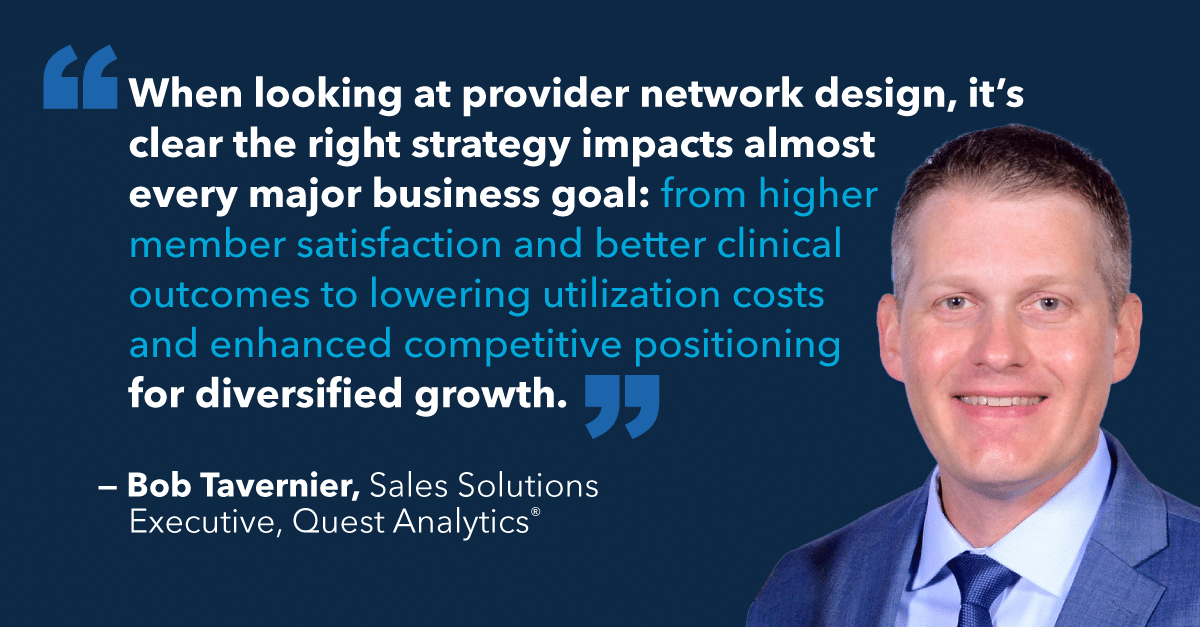Another open enrollment season is upon us. A time when millions of individuals, families, and employers evaluate their healthcare options, reflect on their care experiences, and decide how to move forward with their health insurance. They’re looking for clarity, confidence, and reassurance that their plan will match their needs, and this is your opportunity to deliver exactly that.
Understanding What Matters Most to Healthcare Consumers
To capitalize on this moment, it’s essential to understand what drives consumer decision-making. Why do people choose certain providers? What causes them to leave their current provider and seek care elsewhere? These insights can be instrumental in guiding your provider network management and provider data management strategies to offer a plan that is attractive during open enrollment and long after.
Healthcare decisions are personal, yet there are common factors that influence the choices people make about their healthcare services. The 2024 Jarrard National Consumer Survey reveals factors that matter most. By aligning your strategies with these insights, you can shape a provider network that truly meets consumer expectations.
Top Reasons Why Consumers Select Their Healthcare Providers
When consumers select a primary care physician (PCP) or a specialist, their choices are often guided by a combination of practical and reputational factors.
Primary Drivers for Considering a PCP
According to the survey, the following factors are influential when considering a PCP.
#1. Accepts My Insurance
#2. The Location is Convenient
#3. Good Online Ratings and Reviews
Key Insight: When asked how they found their PCP, the majority of respondents said they relied on recommendations from family, friends, and other personal trusted sources.
Primary Drivers for Considering a Specialist
The top considerations when selecting specialists are similar but with a subtle shift.
#1. Accepts My Insurance
#2. The Location is Convenient
#3. Recommendation From Another Healthcare Provider, Such as My PCP
Key Insight: Referrals from a PCP or healthcare provider are the top way respondents find specialists, signaling a need for seamless referral pathways.
Top Reasons Why Members Change Their Healthcare Providers
While attracting new members is important, retaining them is just as critical. Understanding why members leave can help you address pain points before they arise.
#1. Practitioners and Specialists Not Accepting Their Insurance
Over 80% of respondents cited a PCP or Specialist not accepting their insurance as the top reason for why they would change to a different provider.
#2. High Medical Costs
Affordability ranks as the second most common driver for seeking new healthcare options.
#3. Location and Appointment Availability
Interestingly, the third reason differs for PCPs and Specialists.
- For PCPs: About 70% of respondents said inconvenient office locations were a reason for switching. Most respondents are only willing to travel 20–30 minutes to see their PCP.
- For Specialists: The inability to secure an appointment within the desired timeframe was a major factor.
How to Align Your Provider Data Management Strategy With Consumer Priorities
The priorities revealed by this study point to one essential element: accurate, reliable provider data. Inaccurate data can inconvenience your members, inflate the size of your network, misrepresent your offerings, and damage your reputation. Here’s how to refine your provider data management to meet consumer needs and set your network apart.
1. Prioritize Provider Data Accuracy
Consumers, members, and regulators rely on your network data to make informed healthcare decisions. Mistakes—like outdated credentials or incorrect contact details—can damage trust and disrupt care.
Tip: Simplify provider data updates by establishing an accuracy program that makes provider verification and updates easier for everyone involved. Quest Enterprise Services® (QES®) Accuracy can help make this process more efficient by streamlining outreach and attestation efforts while offering actionable insights to maintain data integrity at scale.
2. Remove Ghost Providers
Ghost providers—inactive providers who still appear in your network directories and databases—create avoidable hurdles for consumers searching for care. These unavailable providers mislead members, delay access to services, and diminish trust in your network.
Tip: Include claims data and machine learning to identify active providers and filter out ghost providers. Having this information readily available will allow you to make updates that improve the accuracy of your directory, marketing materials, and member communications.
3. Keep Insurance Participation Status Up-to-Date
Access to in-network providers is a key factor in consumer satisfaction. Misaligned information—such as incorrectly listing a provider as participating in a Medicaid network when they do not—can lead to member confusion and added complications for your team.
Tip: Require providers to verify their plan participation during routine updates. In automating this process, you can catch inconsistencies early and prevent inaccurate information from reaching members.
4. Confirm "Accepting New Patients" Status
When consumers select a health plan—particularly during open enrollment—they make decisions based on the expectation that the listed providers will be available to meet their care needs. Discovering that a provider isn’t accepting new patients can create a frustrating experience, disrupt access to care, and cause buyer’s remorse.
Tip: As part of your ongoing provider verification process, ask providers to confirm their “Accepting New Patients” status. Doing so helps avoid disruptions and ensures a smooth experience for current and new members.
5. Focus On Accurate Appointment Locations
Incomplete or outdated provider address information is a frequent issue in provider directories, and it can create significant challenges for patients. Errors like these often lead to delays, confusion, and frustration as members try to find and schedule care. Moreover, inaccurate location data can artificially inflate the size of your network, giving a false impression of provider availability.
Tip: Use automation and machine learning in QES Accuracy to pinpoint providers listed at multiple locations and identify where they’re actively treating patients.
6. Highlight Provider Specialized Areas of Expertise
Whether it’s managing a chronic condition, accessing mental health services, or finding a specialist for acute concerns, accurate information about a provider’s area of expertise is essential for a smooth referral process.
Having reliable provider details readily available—to members, network providers, and your team—enhances the member experience and simplifies communication across the care team.
Tip: Incorporate provider areas of expertise in your network analysis to identify gaps, optimize referrals, expand service offerings, and ensure members receive timely access to the appropriate care.
Opportunities Beyond Open Enrollment
Open enrollment is a gateway to building stronger member relationships, but their expectations persist year-round. By continuously monitoring your network data with the right solution, making adjustments to ensure adequate access and coverage, and adapting to member needs, you can create an experience that fosters trust and retains members for the long haul.
Contact us today to learn how Quest Analytics can help you succeed this open enrollment season—and beyond.
Know Your Data, Grow Your Business
Provider networks can do more when supported by reliable insights and scalable solutions. Schedule a complimentary consultation with a Quest Analytics expert to explore how we can help you implement these strategies, remove roadblocks, and create a data-powered experience your members can depend on.











